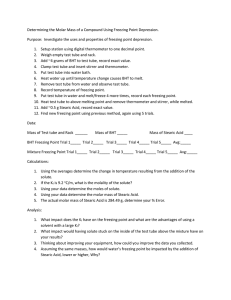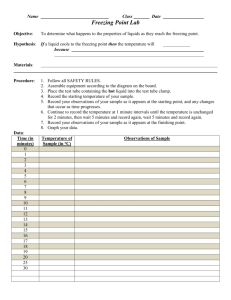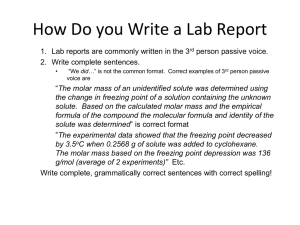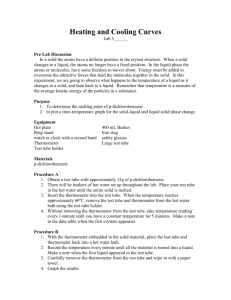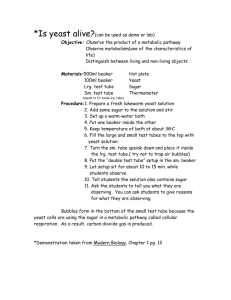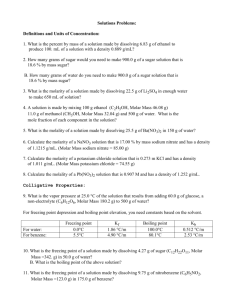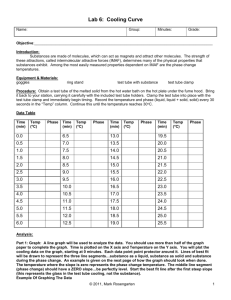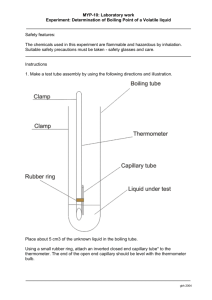MOLAR MASS DETERMINATION: FREEZING POINT DEPRESSION
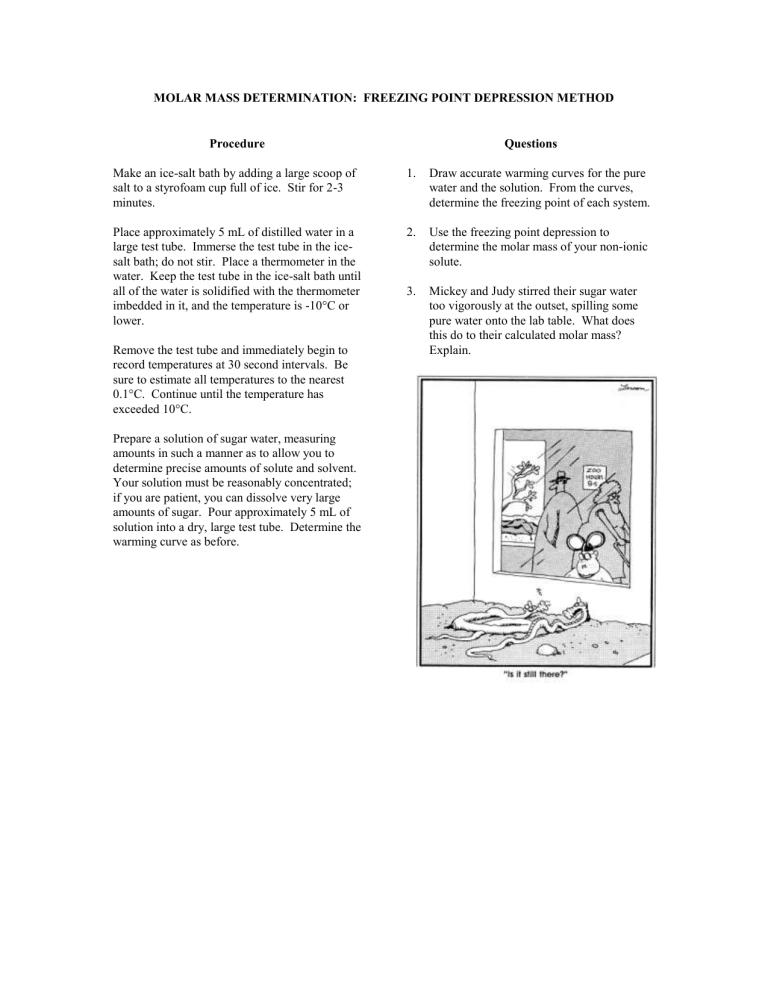
MOLAR MASS DETERMINATION: FREEZING POINT DEPRESSION METHOD
Procedure
Make an ice-salt bath by adding a large scoop of salt to a styrofoam cup full of ice. Stir for 2-3 minutes.
Place approximately 5 mL of distilled water in a large test tube. Immerse the test tube in the icesalt bath; do not stir. Place a thermometer in the water. Keep the test tube in the ice-salt bath until all of the water is solidified with the thermometer imbedded in it, and the temperature is -10°C or lower.
Remove the test tube and immediately begin to record temperatures at 30 second intervals. Be sure to estimate all temperatures to the nearest
0.1°C. Continue until the temperature has exceeded 10°C.
Prepare a solution of sugar water, measuring amounts in such a manner as to allow you to determine precise amounts of solute and solvent.
Your solution must be reasonably concentrated; if you are patient, you can dissolve very large amounts of sugar. Pour approximately 5 mL of solution into a dry, large test tube. Determine the warming curve as before. this do to their calculated molar mass?
Explain.
Questions
1. Draw accurate warming curves for the pure water and the solution. From the curves, determine the freezing point of each system.
2. Use the freezing point depression to determine the molar mass of your non-ionic solute.
3.
Mickey and Judy stirred their sugar water too vigorously at the outset, spilling some pure water onto the lab table. What does

